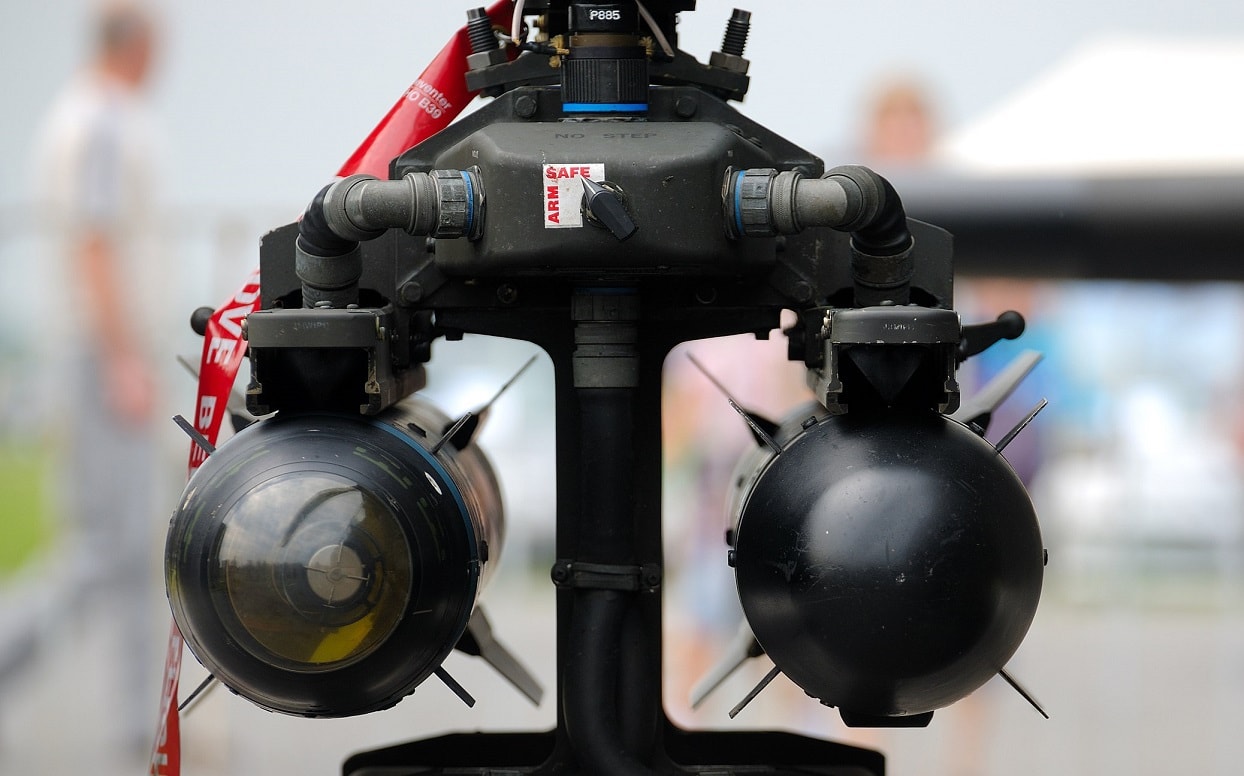Defense News reported this morning that Lockheed Martin is considering whether its Joint Air-to-Ground Missile, or JAGM, can be reconfigured as a mobile, short-range air defense system.
“It’s a concept we have,” Rita Flaherty, Lockheed’s VP for strategy and business operations in the company’s Missiles and Fire Control sector, told Defense News. “We think it will have applicability to a number of platforms.”
The JAGM system, also known as the AGM-179, is an air-to-surface missile. With a semi-active laser and millimeter-wave radar guidance system, the JAGM has a 5-mile range. Weighing 108 pounds, the JAGM can be launched from either rotary-wing or fixed-wing aircraft. Each JAGM unit costs roughly $325,000.
“There is no reason why it has to be limited,” Flaherty said. “It could be ground-launched capability… an anti-armor capability.”
As Jen Judson reported, “The JAGM weapon’s predecessor, the Hellfire Longbow missile, is already on the books for air-defense applications.” He went on to add, “It is part of a first installment of an M-SHORAD Stryker-based system that the U.S. Army rapidly developed and fielded to Europe.”
The Many Flavors of Hellfire
Indeed, the Hellfire missile, or AGM-114, has multiple applications.
First used in the mid-1980s, it is still in service today. Originally designed as an anti-armor weapon, the Hellfire was modified for use in precision drone strikes and to attack high-value targets.
Showing its versatility, the Hellfire was also used in surface-to-surface and surface-to-air roles. The 100-pound missile can be launched from air, land, or sea platforms. At $150,000 per unit, the Hellfire cost considerably less than its JAGM successor.
But like the Hellfire, the JAGM should be versatile. As Judson points out, it is very nearly a plug-and-play replacement to the Longbow missile, and it can engage multiple targets, night and day, in any kind of weather.
The JAGM has not yet been approved for full-rate production, although that decision should be forthcoming.
The JAGM Is a Multi-Platform Weapon
To date, the new JAGM has been launched from various platforms, including rotary-wing aircraft (such as the AH-64 Apache, the MH-60 Black Hawk, the AH-1 Viper, and the OH-58F Kiowa); manned fixed-wing aircraft (the F-35 Lightning II); unmanned fixed-wing aircraft (the MQ-1C Gray Eagle and the MQ-9 Reaper); and naval vessels, using the Mk41 Vertical Launching System.
Ideally, the JAGM will offer the armed services improved operational flexibility while reducing logistics costs. Of course, if the JAGM can be modified to serve in entirely different roles such as air defense, it will perform these tasks even more effectively.
In addition to the U.S. Army, the U.S. Navy and Marine Corps will field the JAGM. The U.S. Air Force is in discussions with Lockheed to outfit its jets with the missile, as well.
The JAGM might even eventually replace Stinger missiles. FIM-92 Stingers are man-portable air-defense systems used as infrared-homing surface-to-air missiles. While the Stinger has been used reliably since its introduction 40 years ago, the U.S. Army is interested in a next-generation upgrade.
Harrison Kass is the Senior Defense Editor at 19FortyFive. An attorney, pilot, guitarist, and minor pro hockey player, he joined the US Air Force as a Pilot Trainee but was medically discharged. Harrison holds degrees from Lake Forest College, the University of Oregon, and New York University. He lives in Oregon and listens to Dokken.

